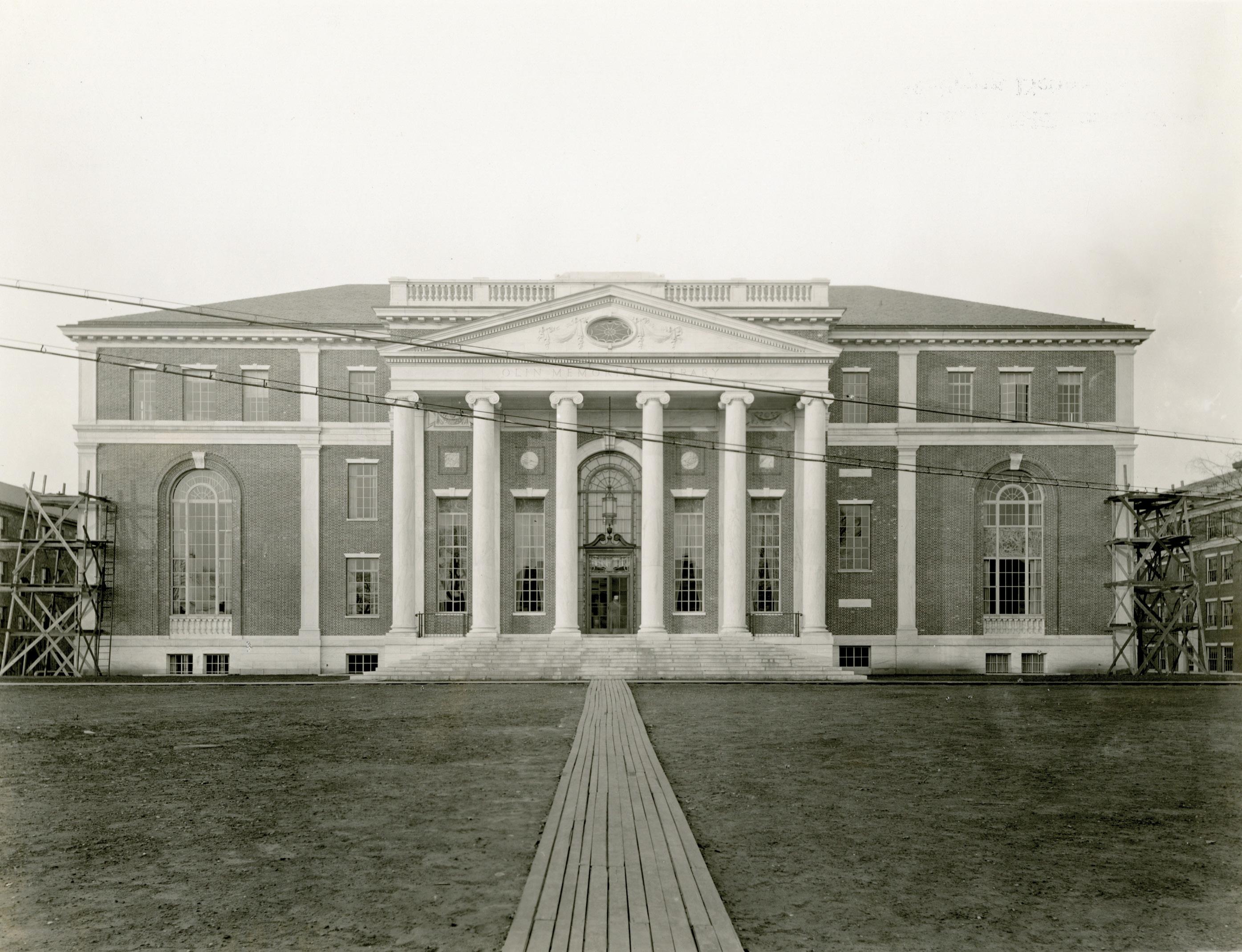THE POETRY ROOM

A collection inspired by the archive by Wesleyan Student Poets
Wesleyan SC&A & Route 9 Literary Collective Presents ...


A collection inspired by the archive by Wesleyan Student Poets
Wesleyan SC&A & Route 9 Literary Collective Presents ...
A look at the collections, collectors, and poets, from the past to the present
Magazine Made for March 24, 2022
Release & Celebration of Spring 2022 Poetry Room Exhibit.
Exhibit Co-curated by Special Collections Cataloging Librarian Maggie Long and Wesleyan Student Oliver Egger’23

Wesleyan’s Special Collections & Archives includes thousands of books of poetry, as well as archival collections and manuscript materials related to poets. The idea of creating an exhibit to highlight the poetry collections in Special Collections & Archives (SC&A) began in early 2020, but unfortunately, this plan like many others, were quickly set aside due to the Covid-19 situation.
The first opportunity to revive and begin working again on the poetry exhibit idea was in December 2021. An outline of what to display in the exhibit became clear with the decision made to highlight many of the magnificent poetry works in our collections, some of the collectors who helped to build up those collections, and for this exhibit, to provide an opportunity for our current student poets to contribute their poetic works.
One of our SC&A student workers, Oliver Egger, Class of 2023, had expressed his interest to be involved when we first talked about the poetry exhibit in 2020. We decided to give him this opportunity to participate as the person responsible to spearhead and shepherd a section of the exhibit highlighting current student poets at Wesleyan.
As Oliver describes “The goal of this section is to show how the poetry is not a stagnant entity but rather an adapting and growing body of work that can be responded to, challenged, or used to spark inspiration. These poems are evidence of the persisting importance of poetry as an art form here at Wesleyan University.”
His interest in Wesleyan student publications, and of the Wesleyan University Press, were among his other contributions to the exhibit.
The current student poetry works are located near the last display case in the Exhibit. Congratulations to all of the student poets who contributed their work.
Acknowledgements:
-Thank you Suzanna Tamminen, Director and Editor-in-Chief, Wesleyan University Press, for lending materials for the Wesleyan University Press display case.
-Thank you Music Library: Jennifer Hadley and Aaron Bittel, for lending materials for the Poetry Room display case. I appreciate your generosity.
-Thank you to Jen Platt, Print Shop, for your kindness assisting me with signage.
-Many thanks to all of the SC&A student workers! Extra special thanks to Huangqin Li, who was extremely helpful in her skillful ways to assist with the displays and the signage. Much appreciated!
-Thank you Jack Stewart for his assistance, and to Emily Ren Jackson, student worker in the Reference Department, for working with Oliver on the poetry book (from the general collections) display in the bookshelves.
-Thank you to Suzy Taraba, Director of Special Collections & Archives, for your support and guidance. Thank you to my department colleagues, Amanda Nelson & Jenny Miglus.
-Thank you to all poets for your well placed words. Always inspiring.
I have enjoyed assembling all of the many layers of this exhibit. Thanks again to Oliver for his enthusiasm, his contributions, and for the work he has done for us in SC&A.
Maggie M. LongSpecial Collections Cataloging Librarian Curator of the Poetry Room Exhibit, 2022
This is a series of poems written by current Wesleyan University student poets which comment on pieces from the Poetry Room Exhibit and the Wesleyan Poetry Archive. The goal of this section is to show how the poetry archive, and the archive in general, is not a stagnant entity but rather an adapting and growing body of work that can be responded to, challenged, or used to spark inspiration. These poems are evidence of the persisting importance of poetry as an art form here at Wesleyan University.
This zine was designed and these poems were selected and edited by exhibit co-curator and student, Oliver Egger ’23.
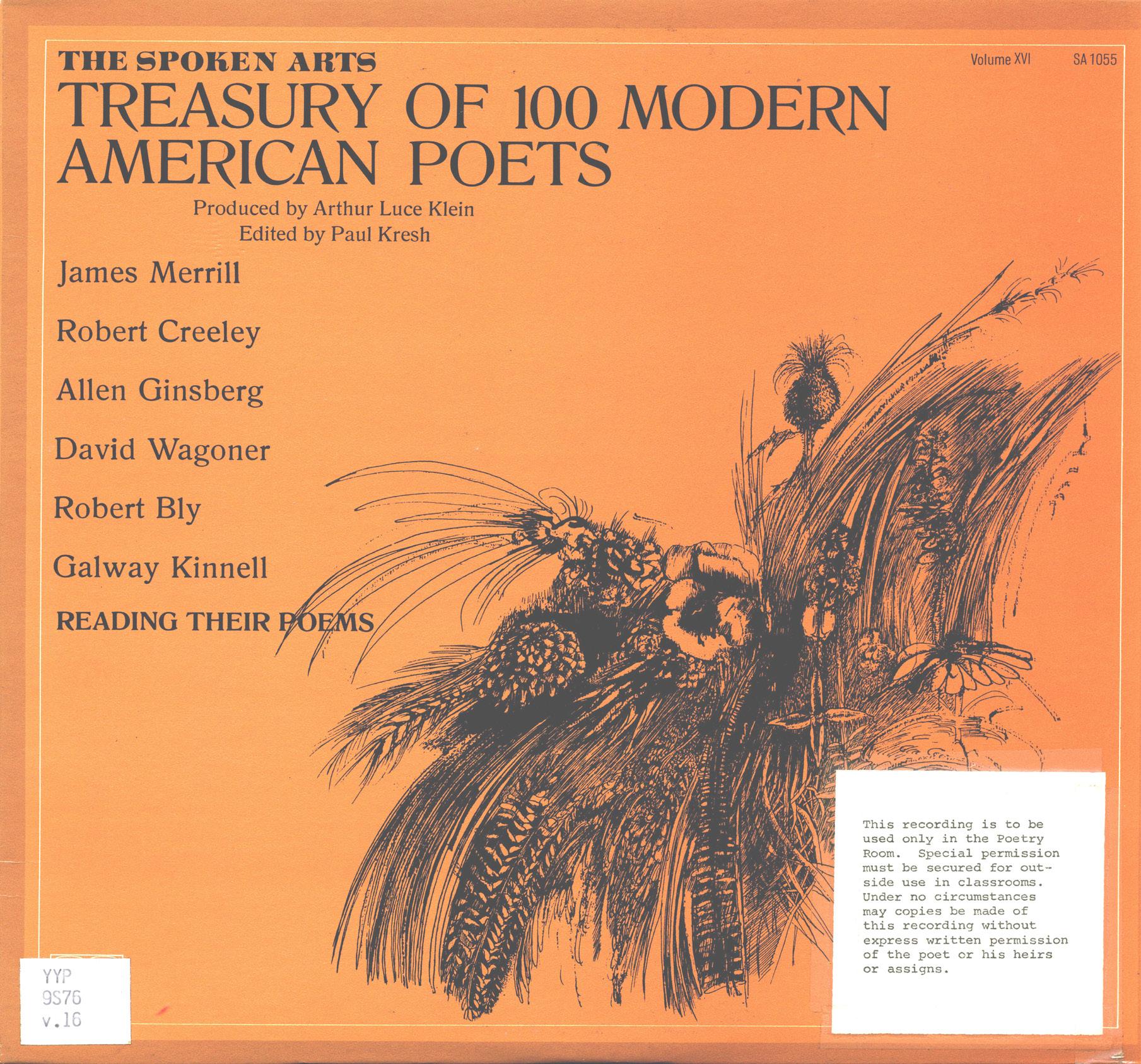
Inspiration: Elizabeth Bishop’s poems “The Colder the Air”, “Sandpiper”, and “The Man-Moth” from her first poetry collection North and South (1955)
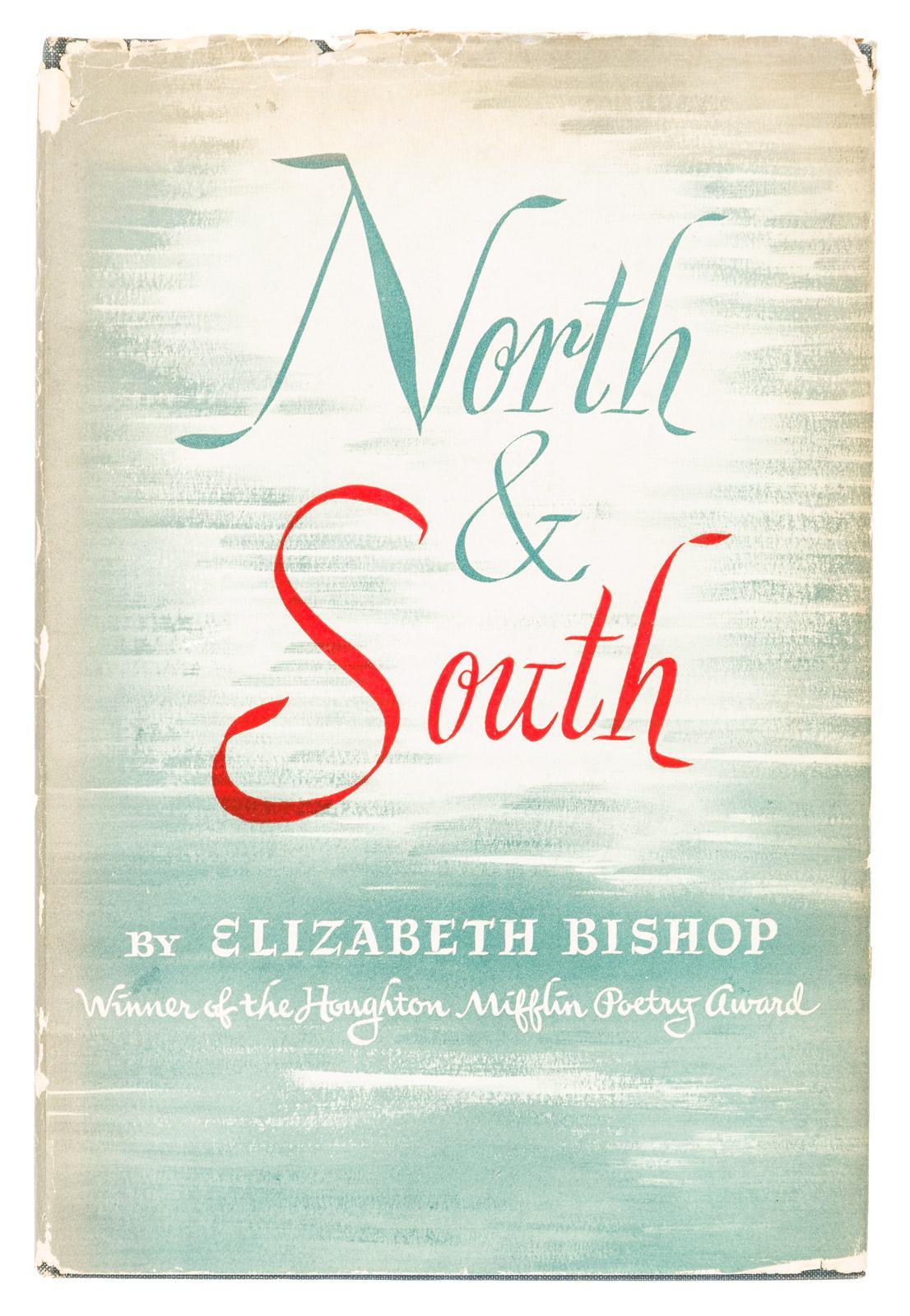
(Who wrote as lucius, Who called himself lucy) Dreamed of a moth at night.
A pseudonym would prove to him What she could not, Which was to live, or so she thought.
A haunted, frightened boy who dreams of his mother. “Time is in her pocket, ticking loud”
If you catch him, hold up a flashlight to his eye
Would you see Little Lizzy inside?
If you catch her,
Let her know I’ve been watching through the crack in the bedroom window, Which she leaves open to let in the blackness Which crawls out through in her dreams.
Oh lizzy, why can’t you play with sylvie and ginny down by the water? Why don’t you pick flowers, instead of noticing sandpipers close to the waves. Why do you think so much about thoughts before they reach your head. Unwilling to observe into oblivion, you are unwittingly, you-obliterating (a verb). Oh lizzy, won’t you please pick flowers instead of writing about them. You are not a perennial, how horrible it must be to sense the spring coming and know you will not be joining it.
Little Lizzy, why did you not call yourself Jane?
Is the assertion clear or not? Is it taupe, is it opaque, is it oblique? Yes.
That, yes, is assertion.
Yes, yes, sit down, and try to catch your breath, as the wind blows against you on cemetery hill. Wind blowing aside, open, wide strides of exposed side. Snow blankets sound. Yes, yes, that is an assertion.
Who is the mammoth, who is the mammoth?! You scream to the editor.
The Man-Moth, I said. But it has gone to print. Yes, that is assertion, yes, that is assertion.
Inspiration: Wallace Stevens’ “13 Ways of Looking at a Blackbird” from first book of poetry, Harmonium (1917).
Thirteen Ways of Looking at a Blackbird
By Wallace StevensI
Among twenty snowy mountains, The only moving thing Was the eye of the blackbird.
II
I was of three minds, Like a tree
In which there are three blackbirds.
III
The blackbird whirled in the autumn winds. It was a small part of the pantomime.
IV
A man and a woman Are one.
A man and a woman and a blackbird Are one.
V
I do not know which to prefer, The beauty of inflections Or the beauty of innuendoes, The blackbird whistling Or just after.
VI
Icicles filled the long window With barbaric glass. The shadow of the blackbird Crossed it, to and fro. The mood
Traced in the shadow An indecipherable cause.
VII
O thin men of Haddam, Why do you imagine golden birds? Do you not see how the blackbird Walks around the feet Of the women about you?
VIII
I know noble accents And lucid, inescapable rhythms; But I know, too, That the blackbird is involved In what I know.
IX
When the blackbird flew out of sight, It marked the edge Of one of many circles.
X
At the sight of blackbirds Flying in a green light, Even the bawds of euphony Would cry out sharply.
XI
He rode over Connecticut In a glass coach. Once, a fear pierced him, In that he mistook The shadow of his equipage For blackbirds.
XII
The river is moving. The blackbird must be flying.
XIII
It was evening all afternoon. It was snowing
And it was going to snow. The blackbird sat In the cedar-limbs.
Among a hundred bustling keygrips
The only unmoving thing Was Hannah Baker in the red tub.
Hannah Baker’s tub was of one color Like a month
In which there are 28.9% more suicides.
III
Hannah Baker sobbed in the camera’s eye. It was just a small part of the pantomime.
IV
Hannah Baker and death Are one.
Hannah Baker and death and that girl in your homeroom with the sad eyes Are one.
V
I do not know which to despise, The cruelty of instruction
Or the cruelty of innuendos, The close-up on Hannah Baker’s opening wrist Or the cut to black after.
VI
A face filled the long mirror With barbaric resolve. The shadow of Hannah Baker Crossed it, to and fro. The mood
Traced in the face lines A decipherable cause.
VII
O coked up men of Hollywood, Why do you imagine dying girls?
Do you not see how your own Linger at the feet Of the caskets about you?
VIII
I know dreaming of a beautiful end To time’s brutal, inescapable rhythm; And I know, too,
That Hannah Baker is involved In what I know.
IX
When Hannah Baker’s bath cut to credits, It marked the birth
Of one of many deaths.
X
At the sight of Hannah Baker Bathing in a red wetness, Even the joy of heard harmony Would sound like dissonance.
XI
I watched her die In my cool bed. Once, a fear pierced me, In that I mistook The shadow of my shadow For Hannah Baker.
XII
The television is talking. Hannah Baker must be dying.
XIII
It was sunset all morning. The showrunner was living, And he was going to live.
Hannah Baker dies
In the redding tub.
Inspiration: Wesleyan Honors College Student Poetry 1965-1973, Direct Poems are “Ash Blonde,” Spike D’Arthenay (1965), “Cheshire Cat,” Frank Cobb (1969), “Exchange,” Frederick Lord (1971), and “Come Back to Me Just One More Time,” Michel de Konkoly Thege (1973)

Turnpike pixie girl, loving soul,
Come back to me just one more time. Float on foam sandals, to flutter at my back invisible, bouncing laughter, I’m sorry. For not being the man you thought I was, for not following you through long white tunnels, door after door, running in electric directions to some unlighted mansions, because if you and I leapt, you would fly, each bird bone a bar of the electric xylophone pattern, invisible, bouncing lost in the air, and I would sink because I don’t make magic happen like you do.
Inspiration: “Among School Children” by William Butler Yeats from collection The Tower (1928) and the “The Judgement of Solomon” a story from the Hebrew Bible.

And such, a babe brought forth hath two his mother’s kiss and pigeons’s coo and mother’s misses doves in twain to see that king who comes again
And lo, a babe brought to the pyre a bleating, bloated saint afire the king to cast his judgment fourth two sobbing mothers’ cries hard wroth
III
And then, at time of king’s unshackle a golden glimmer of steely sparkle bent the branch of mother’s love to rend her sun the little dove
IV
And thus, as scimitar rose high a boisterous ruby weary cry “Take not the one to make him two but leave him.”
V
So it was, and came to pass the azure verdict reached at last the gossamer-wrapped babe undone, to see him placed in mothers’ one.
Inspiration: Elisabeth Tonnard’s photobook In This Dark Wood (2013) which includes ninety different English translations of the first tercet of Dante’s Inferno and photos reflecting modern urban isolation.
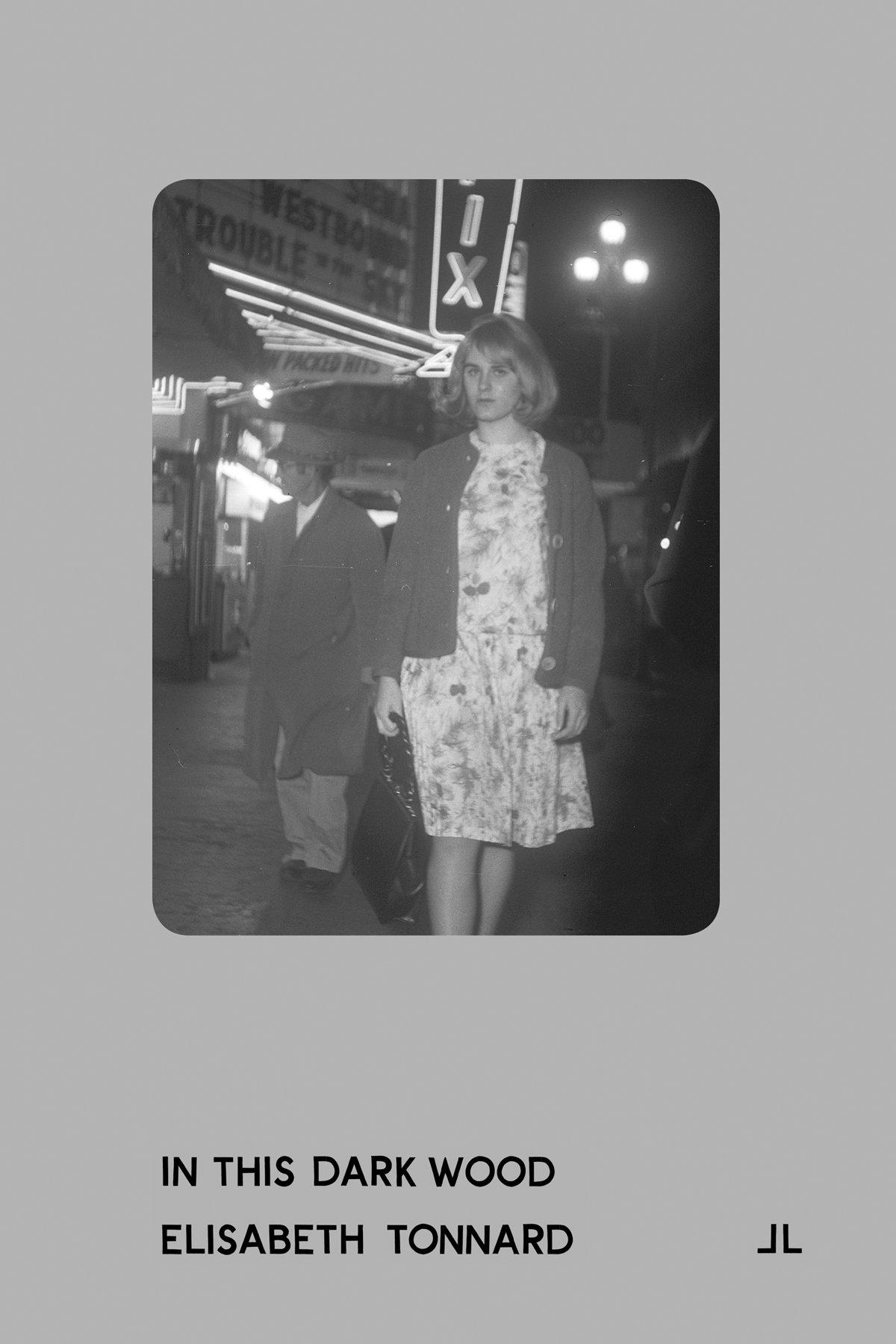
Midway this way of life we’re bound upon, I woke to find myself in a dark wood, Where the right road was wholly lost and gone.
After our pilgrimage, when the world dried up and left us to our own devices, we wandered for the love-language of confirmation— hollowly and through patched light, cloaked in fur, remembering, remembering.
Did you know you were being captured?
We emerge within a thought—if all future imaginings feel void, what is next? We’ll put our ear to the green, the lush, the flourishing, grow our own food, nourish in sweet ceremony, exchange art as currency, wonder: What if a cityscape never saw us again? When the inner-workings fall, will we be safe?
I look right through you. I didn’t even see you there.
Inspiration: “The Poems of Our Climate” by Wallace Stevens from his fifth poetry book, Parts of a World (1942).”
Clear water in a brilliant bowl, Pink and white carnations. The light In the room more like a snowy air, Reflecting snow. A newly-fallen snow At the end of winter when afternoons return. Pink and white carnations – one desires So much more than that. The day itself Is simplified: a bowl of white, Cold, a cold porcelain, low and round, With nothing more than the carnations there.
Say even that this complete simplicity Stripped one of all one’s torments, concealed The evilly compounded, vital I And made it fresh in a world of white, A world of clear water, brilliant-edged, Still one would want more, one would need more, More than a world of white and snowy scents.
There would still remain the never-resting mind, So that one would want to escape, come back To what had been so long composed. The imperfect is our paradise. Note that, in this bitterness, delight, Since the imperfect is so hot in us, Lies in flawed words and stubborn sounds.
The space between the itching skyscrapers
Lifted the fetal phoenix of the sun
Like two circus men in steel-sequin tights. Then the color, like honey—sweet amber Captures faces and your face, newly loved, Most of all. And one can’t help but desire The day to halt entirely. No more To lift or light, a breath of blinding white Alabaster wind, winding the wide streets, Towards the emptiness of togetherness— Two minds submerged under this brilliant bowl.
Then it would be enough for us?
Trapped insects in the web of bliss. The I, now we, to us, to dust?
Floating to the black circus tent of space, Where we, as moons, would tend to Saturn As a pair of flies to a corpse. Morning would still need to pass Towards the charade of self, past love’s Look and the undoing of dawn.
Waiting at the table, the parting cup
For us to sip, and leave, and fill, and sip, To birth, to noon, to flame, to ash, to dust, Then birth again. Release is the reward. For where we loved at dawn becomes the dusk, But because both the birds burned within us Light can’t help but linger as night sinks in.
Inspired by “An Idyl” by John
AngusThompson in Wesleyan Verse,
edited by Frederic Lawrence Knowles (1894)
Daphne, pause the smile on your fair face
Withdraw the swallows on the restless wind
E’en the rays bearing gently, Daphne,
Nature’s torrid melody, that place where murmuring Nowhere is
Inspiration: “Mureau” by John Cage included in his book M: Writings ‘67’72, published by Wesleyan University Press (1973). “Mureau” is itself composed by collaging language from the journals of Henry David Thoreau about music, silence and listening (the title: “Mu-” from “music” and “-reau” from “Thoreau”). Thus “measures soundness” does to Cage’s writing what he did to Thoreau’s, though the methods are not the same: this poem’s formal process is wheeler’s own variation on the “asymmetry” genre developed by Jackson Mac Low, John Cage’s friend and musico-poetic co-inspirator.
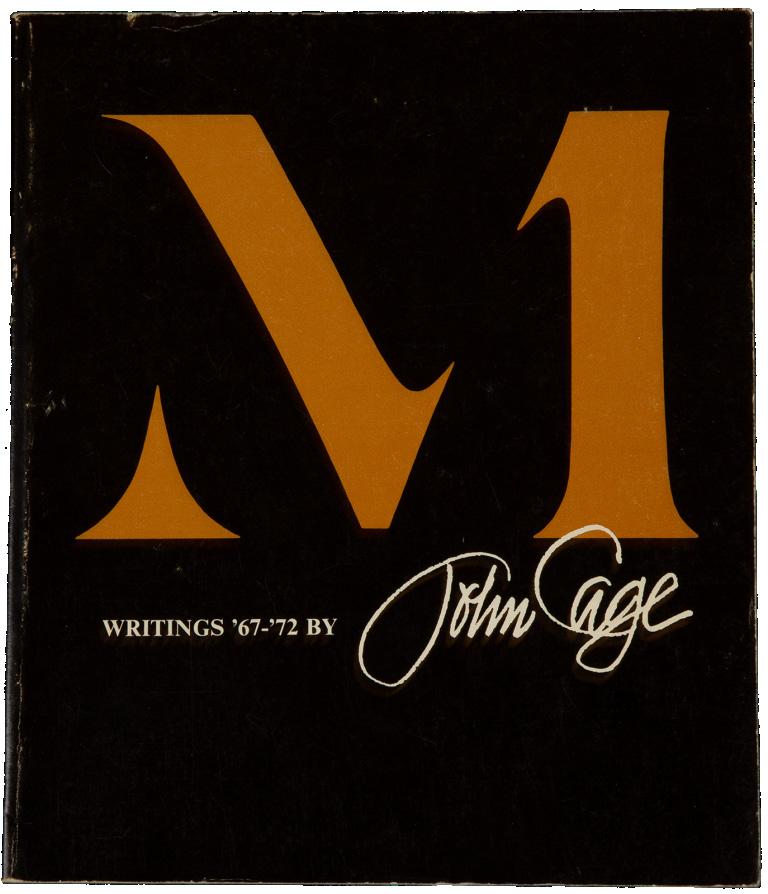
measures soundness
By stuart wheeler M.A. ‘21measures soundness erations a man to sparrowsita us?
Rather hear es squeakarieffect swhen of slightest tinkling u it wood not Does it no inherent music every postt silent scream o
erations rather hear a man to that peculiar itself of slightest tinkling not parrowsita a man to measures soundness a room not that peculiar of slightest tinkling
sparrowsita ppetite and a man to rather hear reverb of slightest tinkling We hear! Squeakarieffect itself that peculiar a room us?
Sparrowsita
rather hear a man to that peculiar he hears the telegraph, erations reverb he thinksthose es a room roomit is a young erations reverb a room there is ingpleasa owl touches the stops, no inherent music squeakarieffect sparrowsita pa with a room reverb roomit is a young owl touches the stops, wakes squeakarieffect ingpleasa there is a sparrowsita postt ed der a roomit is a young Rhyme and Oeyssee morning would be swhen issued forththe takes to make a of slightest tinkling f great hawka sparrowsita lives itself gwalky in verse he hears the telegraph, that peculiar erations squeakarieffect there is takes to make ingpleasa not k swich loud alarm issued forththe no inherent music g birdswith us?
Squeakarieffect
not of slightest tinkling that peculiar does it of slightest tinkling erations sparrowsita itself that peculiar not owl touches the stops, there is
erations roomit is a young a takes to make issued forththe Oeyssee morning noblest to sing swhen sparrowsita pi at a Rhyme and repeated or woul d think with the windto hear silent is the appetitefor a sparrowsita piercing ders a repeated rending the airthis or was being born again scream o
It the triosteum a neighbor singing
I have done it again. One year in every ten I manage it——
A sort of walking miracle, my skin Bright as a Nazi lampshade, My right foot
A paperweight, My face a featureless, fine Jew linen.
Peel off the napkin O my enemy. Do I terrify?——
The nose, the eye pits, the full set of teeth? The sour breath Will vanish in a day.
Soon, soon the flesh The grave cave ate will be At home on me
And I a smiling woman. I am only thirty. And like the cat I have nine times to die.
This is Number Three. What a trash To annihilate each decade.
What a million filaments. The peanut-crunching crowd Shoves in to see
Them unwrap me hand and foot—— The big strip tease. Gentlemen, ladies
These are my hands My knees.
I may be skin and bone,
Nevertheless, I am the same, identical woman. The first time it happened I was ten. It was an accident.
The second time I meant To last it out and not come back at all. I rocked shut
As a seashell. They had to call and call And pick the worms off me like sticky pearls.
Dying
Is an art, like everything else. I do it exceptionally well.
I do it so it feels like hell. I do it so it feels real.
I guess you could say I’ve a call.
It’s easy enough to do it in a cell. It’s easy enough to do it and stay put. It’s the theatrical
Comeback in broad day
To the same place, the same face, the same brute Amused shout:
‘A miracle!’ That knocks me out. There is a charge
For the eyeing of my scars, there is a charge For the hearing of my heart—— It really goes.
And there is a charge, a very large charge For a word or a touch Or a bit of blood
Or a piece of my hair or my clothes. So, so, Herr Doktor. So, Herr Enemy.
I am your opus, I am your valuable, The pure gold baby
That melts to a shriek. I turn and burn.
Do not think I underestimate your great concern.
Ash, ash— You poke and stir. Flesh, bone, there is nothing there——
A cake of soap, A wedding ring, A gold filling.
Herr God, Herr Lucifer Beware Beware.
Out of the ash I rise with my red hair And I eat men like air.
I take a breath and then another shot to keep my throat primed & ready to host another round of hard laughs & dirty words.
After that, I’ll take a scalpel to the timid skin of my neck & step out for a smoke break if it means I get to watch this time & time & time again I mistake the ache for hunger & out of the ash I rise with my red hair & eat your men
cool as dying, cool as the menthol air.
Are you interested in having your work included in the archive? Submit your own poetry at the QR code below!


“Poetry
has always been like archives that peoples have continually used to serve their feelings, thoughts, national identities, and culture...Those who had lost contact with their past for a certain period found and experienced the expression of their own selves in poetry,and the were able to see their history as a whole in it.”
- Muhammed Fethullah Gülen